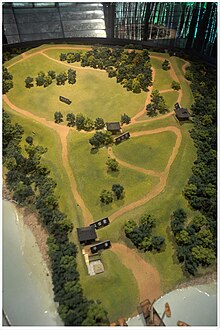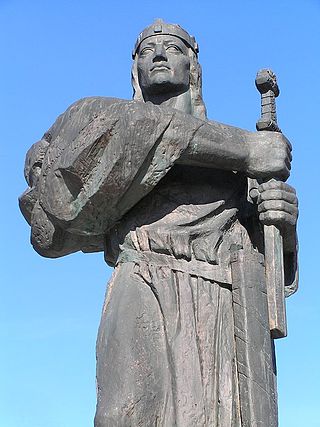
Year 846 (DCCCXLVI) was a common year starting on Friday of the Julian calendar.

Balhae,also rendered as Bohai and called Jin was a multiethnic kingdom established in 698 by Dae Joyeong and originally known as the Kingdom of Jin until 713 when its name was changed to Balhae. At its greatest extent it corresponded to what is today Northeast China,the northern half of the Korean Peninsula and the southeastern Russian Far East.
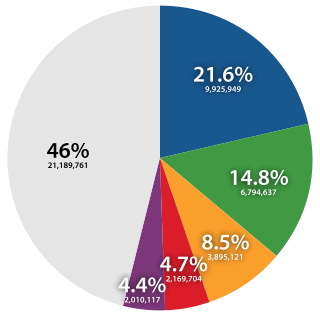
Lee,I,or Yi (이) is the second-most-common surname in Korea,behind Kim (김). As of the South Korean census of 2015,there were 7,306,828 people by this name in South Korea or 14.7% of the population.

Yeosu,formerly romanized as Yosu,is the second largest city in South Jeolla Province,South Korea. In 1998,the Old Yeosu City,Yeocheon City and Yeocheon County were merged and the current city,Yeosu,was formed.
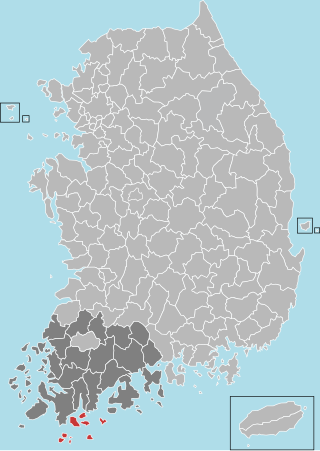
Wando County is a county in South Jeolla Province,South Korea. It takes its name from the island of Wando,which is the largest island within the county and serves as the county seat.
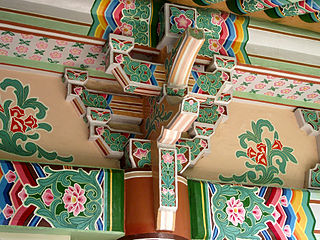
Korean architecture refers to an architectural style that developed over centuries in Korea. Throughout the history of Korea,various kingdoms and royal dynasties have developed a unique style of architecture with influences from Buddhism and Korean Confucianism.

Korea's military history spans thousands of years,beginning with the ancient nation of Gojoseon and continuing into the present day with the countries of North Korea and South Korea,and is notable for its many successful triumphs over invaders.
Jang Bo-go (787–841),whose childhood name was Gungbok or Gungpa (Korean: 궁파),was a Sillan who rose to prominence in the Later Silla period of Korea as a powerful maritime figure who effectively controlled the Yellow Sea,and dominated the trade between Silla,Heian Japan,and Tang China for decades. His impressive fleet of ships was centered in Wando,an island in South Jeolla Province. So influential a figure did Jang become in late Silla politics that he was granted official office as maritime commissioner of the Cheonghaejin Garrison and came near to marrying his daughter into the Silla Royal House before his assassination in 841. He was worshipped as a god in China,Korea,Japan,and Vietnam following his death.

Emperor of the Sea is an epic South Korean television drama series starring Choi Soo-jong,Chae Shi-ra,Song Il-kook،Soo Ae and Chae Jung-an It aired on KBS2 from November 24,2004,to May 25,2005,on Wednesdays and Thursdays at 21:55 for 51 episodes. The period drama is based on Choi In-ho's 2003 novel Hae-sin,which depicts the life of Jang Bogo,who rises from a lowly slave to a powerful maritime figure who dominated the East Asia seas and international trade during the Unified Silla dynasty.

The Northern and Southern States period is the period in ancient Korean history when Unified Silla and Balhae coexisted in the south and north of the peninsula,respectively.

Ki castle was an ancient kōgoishi type castle (also known as a Korean-style fortresses in Japan located in the city of Sōja,Okayama Prefecture,Japan. Its ruins have been protected as a National Historic Site since 1986. Portions of the castle were reconstructed in the early 2000s.

The naval history of Korea dates back thousands of years since the prehistoric times when simple fishing ships were used. Military naval history dates back to the Three Kingdoms period and Unified Silla dynasties of Korea in the 7th century. Because of the constant coastal attacks by the Wa Japanese and other barbarian tribes,Korean shipbuilding excelled to counter these threats as a result. During the Unified Silla period,Jang Bogo,a merchant,rose as an admiral and created the first maritime trading within East Asian countries. During the Goryeo dynasty,sturdy wooden ships were built and used to fight pirates. Korean shipbuilding again excelled during the Imjin war,when Admiral Yi defeated the advancing Japanese fleets.
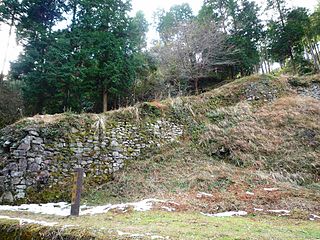
Ōno Castle was an ancient castle (also known as a Korean-style fortresses in Japan straddling the border of the cities of Ōnojōand Dazaifu,and the town of Umi,Fukuoka Prefecture Japan. Its ruins have been protected as a National Historic Site since 1932,and raised to a Special Historic Site since 1953 with the area under protection expanded in 2012. The name of ŌnojōCity comes from this castle;however,approximately 80% of the castle area is within the boundaries of Umi Town.
Kim Yang was part of the Silla royal family and its retainers. Said to be a descendant of the third son of Kim Chunchu.

The Baekje Historic Areas are a group of monuments located in three South Korean cities:Gongju,Buyeo,and Iksan. They relate to the last period of the Baekje Kingdom,representing the period from 475 to 660 CE,which was one of the three kingdoms that flourished from 18 BC to 660 CE. The property designated as a UNESCO World Heritage Site has eight archaeological sites. These are:The Gongsanseong fortress and the royal tombs at Songsan-ri,related to the capital city of Ungjin,now Gongju;the Busosanseong Fortress and Gwanbuk-ri administrative buildings,the Jeongnimsa Temple,the Neungsan-ri royal tombs,and the Naseong city wall in Sabi,now Buyeo;and the Wanggung-ri Palace and the Mireuksa Temple in Iksan,a subsidiary capital region of Sabi.

Mizuki Castle was an ancient castle (also known as a Korean-style fortresses in Japan straddling the border of the cities of Ōnojō,Dazaifu,and Kasuga,Fukuoka Prefecture Japan. Its ruins have been protected as a National Historic Site since 1921,and raised to a Special National Historic Site since 1953 with the area under protection expanded in 2013.

Kii Castle was an ancient castle (also known as a Korean-style fortresses in Japan straddling the border between the city of Chikushino,Fukuoka and the town of Kiyama,Saga Prefecture Japan. Its ruins have been protected as a National Historic Site since 1937,and raised to a Special Historic Site since 1954.

Iwakisan Kōgoishi (石城山神籠石) was an ancient castle (also known as a Korean-style fortresses in Japan located in the city of Hikari,Yamaguchi Prefecture,in the San'yōregion of Japan. Its ruins have been protected as a National Historic Site since 1951.

Goshogatani Kōgoishi (御所ヶ谷神籠石) was an ancient castle (also known as a Korean-style fortresses in Japan straddling the border between the Katsuyama Okubo townships of Miyako and the Tsuzumi neighborhood of the city of Yukuhashi,Fukuoka Prefecture Japan. Its ruins have been protected as a National Historic Site since 1953,with the area under protection expanded in 1998.

Kagenouma Kōgoishi (鹿毛馬神籠石) was an ancient castle (also known as a Korean-style fortresses in Japan located in the Kageuma neighborhood of the city of Iizuka,Fukuoka Prefecture Japan. Its ruins have been protected as a National Historic Site since 1945,with the area under protection expanded in 2002.
